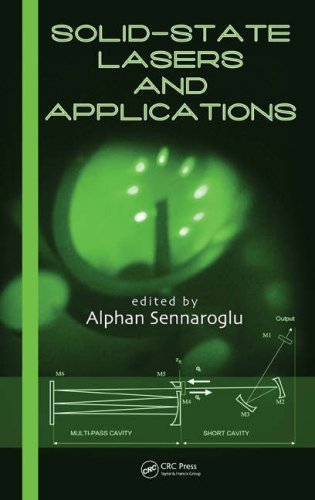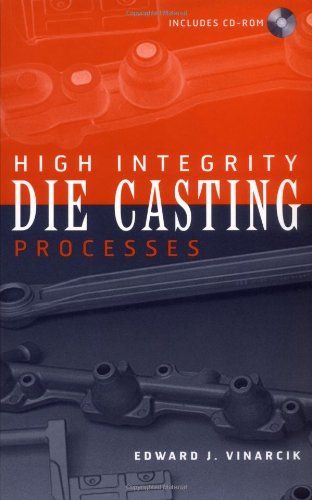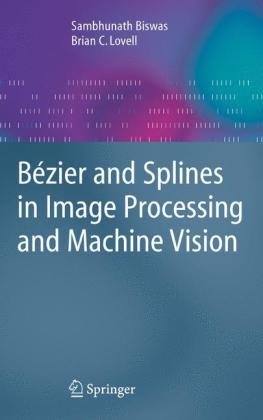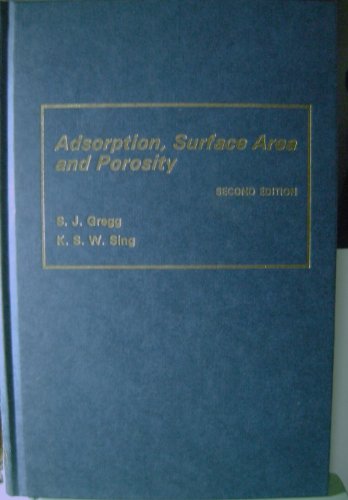Alphan Sennaroglu0849335892, 9780849335891, 9781420005295
Table of contents :
SOLID-STATE LASERS AND APPLICATIONS……Page 7
Preface……Page 9
Editor……Page 13
Contributors……Page 14
Table of Contents……Page 16
CONTENTS……Page 18
1.1.2 What Is a Passively Q-Switched Microchip Laser?……Page 20
1.1.3 Organization of Chapter……Page 22
1.2.1.2 Population Inversion, Stimulated Emission, and Gain……Page 23
1.2.1.3 Spontaneous Emission and Lifetime……Page 24
1.2.2.1 Four-Level Gain Media……Page 25
1.2.2.3 Quasi-Three-Level Gain Media……Page 26
1.2.3.1 Rate Equations……Page 28
1.2.3.2 Rate Equations without Saturable Absorber……Page 29
1.2.3.3 Rate Equations with Saturable Absorber……Page 32
1.2.4.1 Rate Equations for Passively Q-Switched Laser……Page 33
1.2.4.2 Initial Conditions……Page 35
1.2.4.3 Second Threshold……Page 36
1.2.4.4 Peak Power……Page 37
1.2.4.5 Pulse Energy……Page 39
1.2.4.6 Pulse Width……Page 40
1.2.4.7 CW-Pumped Passively Q-Switched Lasers……Page 41
1.2.5.1 Single-Frequency Operation……Page 42
1.2.5.2 Afterpulsing……Page 45
1.2.5.4 Pulse-to-Pulse Timing Stability……Page 46
1.2.6 Semiconductor Saturable-Absorber Mirrors……Page 47
1.2.7.1 Issues in Laser Design……Page 49
1.2.7.3.1 Thermal Guiding……Page 50
1.2.7.3.2 Aperture Guiding in Three-Level Gain Media……Page 51
1.2.7.3.4 Gain-Related Index Guiding……Page 52
1.2.7.4 Pump Considerations……Page 53
1.2.8 Additional Thermal Effects……Page 54
1.3.1.1 Saturable Absorbers……Page 55
1.3.1.2.1 Low-Power Embodiments……Page 57
1.3.1.2.2 High-Power Embodiments……Page 60
1.3.2 Amplification……Page 61
1.3.3.1.1 Harmonic Conversion……Page 64
1.3.3.1.2 Optical Parametric Conversion……Page 65
1.3.3.1.3 Raman Conversion……Page 66
1.3.3.2 Gain-Switched Lasers……Page 68
1.4.1 Overview……Page 70
1.4.2.1 Scanning Three-Dimensional Imaging Systems……Page 71
1.4.2.2 Flash Three-Dimensional Imaging Systems……Page 72
1.4.4 Environmental Monitoring……Page 74
1.4.5 Other Applications……Page 78
1.5 Conclusion……Page 79
References……Page 80
List of Symbols……Page 89
CONTENTS……Page 93
2.1 Introduction……Page 94
2.2 Crystal-Field Effects on Yb3+ Energy Level Distributions……Page 95
2.2.2 Crystal Field Strength and Yb3+ Manifolds Splitting……Page 96
2.3.1 Quasi-Thermal Equilibrium……Page 100
2.3.2 Transparency Intensity Imin……Page 101
2.3.3 Laser Extraction Efficiency……Page 103
2.3.4 Thermal Loading……Page 104
2.4 Evaluation of Quantum Efficiency……Page 106
2.5.2 Performances of Some Yb3+ Doped Laser Materials in C.W. Diode Pumping……Page 110
2.5.3 Performances of Some Yb3+ Doped Laser Materials in Fs Regime……Page 113
2.6.1 Thermal Shock Resistance……Page 117
2.6.2 Estimation of Thermal Expansion and Thermal Conductivity Parameters……Page 118
2.7 Conclusions……Page 122
Acknowledgments……Page 123
References……Page 124
CONTENTS……Page 129
3.1.1 Overview of Cr2+:ZnSe Lasers……Page 130
3.1.2 Historical Review of Tunable Solid-State Lasers……Page 131
3.2.1 Synthesis Methods for Cr2+:ZnSe……Page 133
3.2.2 Thermal Diffusion Doping……Page 135
3.2.4 Room-Temperature Absorption Spectra of Cr2+:ZnSe……Page 136
3.2.6 Determination of the Diffusion Coefficient……Page 139
3.3 Fluorescence Spectroscopy of Cr2+:ZnSe……Page 141
3.3.1 Emission Spectrum of Cr2+:ZnSe……Page 142
3.3.2 Temperature and Concentration Dependence of the Fluorescence Lifetime……Page 143
3.3.2.1 Concentration Dependence of the Fluorescence Lifetime……Page 144
3.3.2.2 Temperature Dependence of the Fluorescence Lifetime……Page 146
3.3.3 Dependence of the Fluorescence Efficiency on Chromium Concentration……Page 147
3.3.4.1 Model Equations……Page 149
3.3.4.2 Continuous-Wave Case……Page 150
3.3.4.3 Pulsed Case……Page 152
3.3.4.4 Experimental Results……Page 153
3.4.1 Review of Earlier Work on Pulsed Cr2+:ZnSe Lasers……Page 154
3.4.2 Dependence of the Power Performance on Chromium Concentration……Page 155
3.4.3 Intracavity-Pumped Cr2+:ZnSe Laser with Ultrabroad Tuning……Page 159
3.5 Continuous-wave Cr2+:ZnSe lasers……Page 161
3.6 Mode-Locked Cr2+:ZnSe Lasers……Page 166
3.7 Conclusions……Page 169
References……Page 170
CONTENTS……Page 179
4.1.1 Cerium-Doped Fluoride Crystals……Page 180
4.1.2 Basic Properties of Ce:LLF Laser Medium……Page 185
4.1.3 Basic Properties of Ce:LiCAF Laser Medium……Page 186
4.2.1 Tunable Ce:LLF Laser……Page 188
4.2.2 Tunable Ce:LiCAF Laser……Page 189
4.3 Generation of Subnanosecond Pulses from Ce3+-Doped Fluoride Lasers……Page 190
4.3.1 Short Pulse Generation with Simple Laser Scheme……Page 191
4.3.2 Subnanosecond Ce:LLF Laser Pumped by the Fifth Harmonic of Nd:YAG Laser……Page 192
4.3.3.1 Short Pulse Generation from Ce:LiCAF Laser with Nanosecond Pumping……Page 193
4.4.1 High-Energy Pulse Generation from a Ce:LLF Oscillator……Page 195
4.4.2 High-Energy Pulse Generation from a Ce:LiCAF Oscillator……Page 196
4.4.3 High-Energy Pulse Generation from a Ce:LiCAF Laser Amplifier……Page 197
4.4.4 Ce:LiCAF Chirped-Pulse Amplification (CPA) System……Page 199
4.5 Conclusions and Prospects……Page 202
References……Page 203
5.1 Introduction……Page 208
5.2 Eyesafe Wavelengths……Page 209
5.3 Electronic Energy Structure……Page 210
5.4 Quasi-Three-Level Model……Page 211
5.5 Reabsorption Loss……Page 213
5.6 Ground State Depletion……Page 217
5.7 Reciprocity of Emission and Absorption……Page 220
5.8 Thulium-Sensitized Holmium Laser……Page 222
5.9 Thulium Laser……Page 224
5.10 Upper-State Pumped Holmium Laser……Page 226
5.11 Ytterbium-Sensitized Erbium Laser……Page 229
5.12 Upper-State Pumped Erbium Laser……Page 231
References……Page 232
6.1 Introduction……Page 248
6.2 Host Materials……Page 249
6.2.1 Basic Properties and Recent Progress of Nd:YAG Lasers……Page 250
6.3.1 Rod Crystals……Page 251
6.3.1.1 End-Pumped Rod Lasers……Page 252
6.3.1.2 Side-Pumped Rod Lasers……Page 255
6.3.2.1 End-Pumped Slab Lasers……Page 259
6.3.2.2 Side-Pumped Slab Lasers……Page 261
6.4.1 Intracavity Second-Harmonic Generation……Page 266
6.4.2 Intracavity Third-Harmonic Generation……Page 269
References……Page 270
CONTENTS……Page 273
7.1 Introduction……Page 274
7.2 History of Mode-Locked Lasers……Page 275
7.3 Gain Media for Ultrashort Pulse Generation……Page 280
7.4.1 Orders of Dispersion……Page 284
7.4.2.1 Dispersion from Wavelength-Dependent Refraction……Page 285
7.4.2.3 Gires–Tournois Interferometers (GTIs)……Page 286
7.4.2.4 Dispersive Mirrors……Page 287
7.4.2.5 Dispersive SESAMs……Page 288
7.5 Kerr Nonlinearity……Page 289
7.6 Soliton Formation……Page 290
7.7.1 General Remarks……Page 291
7.7.2 Active Mode Locking……Page 293
7.7.3.1 The Starting Mechanism……Page 295
7.7.3.2 Parameters of Fast and Slow Saturable Absorbers……Page 296
7.7.3.3 Passive Mode Locking with Fast and Slow Saturable Absorbers……Page 298
7.7.3.4.1 Semiconductor Absorbers……Page 301
7.7.3.4.2 Kerr Lens Mode Locking……Page 304
7.7.3.4.4 Nonlinear Mirror Mode Locking……Page 305
7.7.3.5 Q-Switching Instabilities……Page 306
7.7.3.6 Passive Mode Locking at High Repetition Rates……Page 308
7.8 Designs of Mode-Locked Lasers……Page 310
7.8.2 High-Power Thin-Disk Laser……Page 311
7.8.3 Typical Femtosecond Lasers……Page 313
7.8.4 Lasers with High Repetition Rates……Page 315
7.8.5 Passively Mode-Locked Optically Pumped Semiconductor Lasers……Page 316
7.9 Summary and Outlook……Page 318
References……Page 320
8.1 Introduction……Page 333
8.2 Mode-Locked Femtosecond Lasers……Page 335
8.3.1 What Is a Q-Preserving Multipass Cavity?……Page 338
8.3.2 Design Rules for Q-Preserving Multipass Cavities……Page 339
8.3.3 An Illustrative Design Example……Page 343
8.3.4 Compensating Optics for Non-q-Preserving MPCs……Page 344
8.3.5 Pulse Repetition Rates……Page 347
8.3.6 Practical Considerations……Page 351
8.4 Experimental Work on Multipass Cavity Femtosecond Lasers……Page 352
8.4.1 Compact Femtosecond Lasers Based on the MPC Concept……Page 353
8.4.2 Pulse Energy Scaling in Low-Average-Power Systems……Page 356
8.4.3 High Pulse Energies with MPCs……Page 357
8.4.4 MPC Lasers with Ultralow Repetition Rates……Page 358
Acknowledgments……Page 359
References……Page 360
CONTENTS……Page 363
9.1.1 Introduction……Page 364
9.1.3 Numerical Model……Page 365
9.1.3.2 Soliton Mode-Locking……Page 367
9.1.4 Cavity-Dumping Dynamics of Picosecond Lasers……Page 368
9.1.5 Cavity-Dumping Experiments With Picosecond Lasers……Page 370
9.1.6 Cavity-Dumping Dynamics of Femtosecond Lasers……Page 372
9.1.7 The Cavity-Dumped Yb:KYW Oscillator……Page 381
9.1.8 Pulse Compression……Page 383
9.2.1 Introduction……Page 385
9.2.2 Absorption of Femtosecond Pulses in Transparent Materials……Page 386
9.2.3 Refractive Index Change……Page 387
9.2.4 State of The Art in Femtosecond Laser Waveguide Writing……Page 389
9.2.5 Optical Waveguide Writing by Cavity-Dumped Yb Laser……Page 391
References……Page 397
CONTENTS……Page 402
10.1 Femtosecond-Laser-Based Frequency Combs for Optical Frequency Metrology……Page 403
10.2.1 Laser Dynamics……Page 407
10.2.2 Technical Challenges in Generating Octave-Spanning Spectra……Page 412
10.2.3 Experimental Setup and Results……Page 416
10.3 Carrier-Envelope Phase Control……Page 418
10.4 Carrier-Envelope Phase-Controlled 200 MHz Octave-Spanning Ti:Sapphire Lasers……Page 424
10.5 Noise Analysis of Carrier-Envelope Frequency-Stabilized Lasers……Page 427
10.5.1 Transfer Function Representation for the Pulse Energy versus Pump-Power Dynamics……Page 429
10.5.2 Determination of the Carrier-Envelope Phase Error……Page 433
10.6 Carrier-Envelope Phase-Independent Optical Clockwork for the HeNe/CH4 Optical Molecular Clock……Page 437
10.7 Conclusions……Page 442
References……Page 443
11.1 Introduction……Page 450
11.2 Theory of Optical Parametric Amplification……Page 452
11.3.1 Seed Generation……Page 463
11.3.2 OPAs in Near-IR……Page 465
11.3.4 OPAs in Mid-IR……Page 466
11.4 Ultrabroadband Optical Parametric Amplifiers……Page 467
11.5 Self-Phase-Stabilized Optical Parametric Amplifiers……Page 473
11.6 Optical Parametric Chirped-Pulse Amplification……Page 478
11.7 Conclusions……Page 480
References……Page 481
CONTENTS……Page 486
12.2 Mathematical Basics……Page 487
12.3.1 Quantum Noise Limits……Page 490
12.3.2 Other Noise Sources……Page 494
12.3.3.1 Measurement of Relative Intensity Noise……Page 496
12.3.3.2 Measurement of Phase Noise……Page 497
12.4 Multimode Continuous-Wave Lasers……Page 499
12.5.2 Active vs. Passive Q Switching……Page 501
12.6.1 Types of Noise……Page 502
12.6.2 Coupling Effects……Page 503
12.6.3 Intensity Noise……Page 505
12.6.4 Timing Jitter……Page 506
12.6.5 Jitter Measurements……Page 510
12.6.6 Optical Phase Noise and Carrier-Envelope Offset Noise……Page 514
Appendix 1: Derivation of Schawlow–Townes Formula……Page 516
Appendix 2: Derivation of Linewidth Formula for Lasers with Amplitude/Phase Coupling……Page 518
References……Page 519







Reviews
There are no reviews yet.